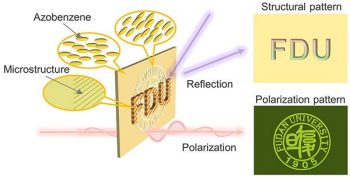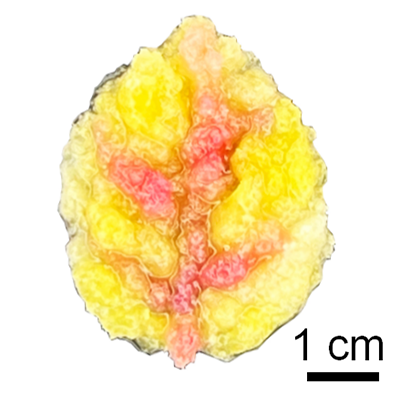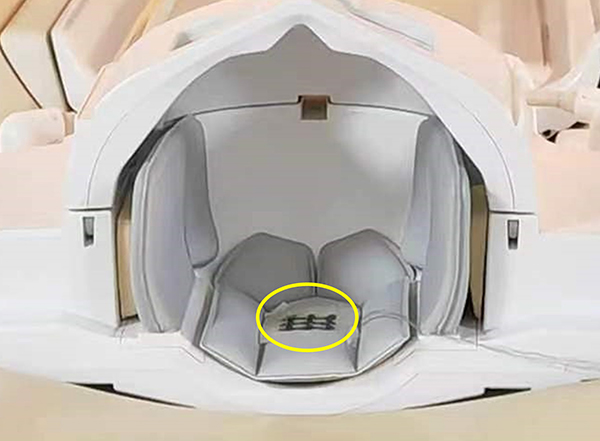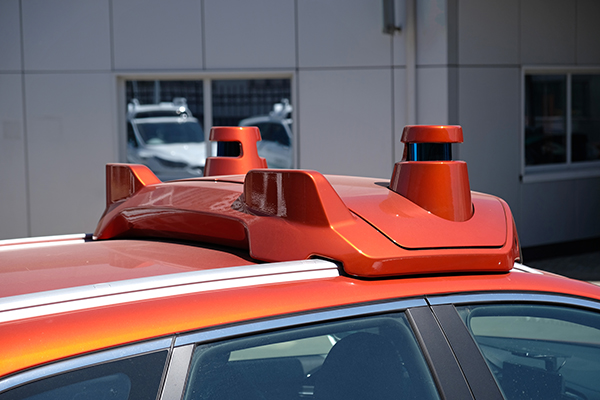FOR IMMEDIATE RELEASE

Growing concern about data theft and counterfeiting has inspired increasingly sophisticated security technologies, like hologram seals, that can help verify the authenticity of currency, passports and other important documents. However, as security technologies evolve, so do the techniques criminals use to get past them. To stay one step ahead of these bad actors, researchers report in ACS’ Langmuir that they have developed a new photopatterning technique that creates two light-reactive images on one material.
Previous research teams have struggled to manufacture similar “dual-mode” films, where two patterns can be separately stored and separately viewed, because producing the second image often damages the quality of the first one. To prevent this interference, Lang Qin, Yanlei Yu and colleagues from Fudan University created two different types of images — a polarization pattern and a structural pattern — within the same film. For the film’s material, they used an azobenzene-containing liquid crystal polymer (ALCP) because of azobenzene’s ability to create sharp images with polarized light (light that’s been filtered so all the waves are aligned in a specific direction) and because LCPs are easy to manipulate into intricate patterns for vibrant structural images.
To construct their dual-patterned film, the researchers started with a layer of ALCP. For the structural image, they imprinted a micropatterned “FDU” (for Fudan University) into the polymer, like pressing a pattern into a wax seal on an envelope, and then cured the image with green light. To create the polarization pattern on top of the structural image, the researchers placed a stencil of the university’s seal over the film and then exposed it to polarized light, which changed the orientation of the azobenzene molecules in the polymer. The process created a pattern that’s not visible in ambient light but is revealed in polarized light.
Under ordinary light, the resulting film showed the FDU letters as the light reflected off the structural image. Then the film revealed the university’s seal when polarized light shone through it. Because both images are created without chemically changing the material’s molecular structure, the film has the added benefit of being rewritable, allowing the user to pattern new images when needed. The researchers say their dual-mode, ambient and polarized light film has potential value for a wide variety of high-level security applications, like seals for authenticating paper money or ID badges.
The authors acknowledge funding from the National Natural Science Foundation of China and the Innovation Program of the Shanghai Municipal Education Commission.
###
The American Chemical Society (ACS) is a nonprofit organization chartered by the U.S. Congress. ACS’ mission is to advance the broader chemistry enterprise and its practitioners for the benefit of Earth and all its people. The Society is a global leader in promoting excellence in science education and providing access to chemistry-related information and research through its multiple research solutions, peer-reviewed journals, scientific conferences, eBooks and weekly news periodical Chemical & Engineering News. ACS journals are among the most cited, most trusted and most read within the scientific literature; however, ACS itself does not conduct chemical research. As a leader in scientific information solutions, its CAS division partners with global innovators to accelerate breakthroughs by curating, connecting and analyzing the world’s scientific knowledge. ACS’ main offices are in Washington, D.C., and Columbus, Ohio.
To automatically receive press releases from the American Chemical Society, contact newsroom@acs.org.
Note: ACS does not conduct research, but publishes and publicizes peer-reviewed scientific studies.









